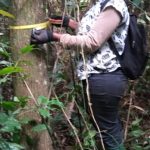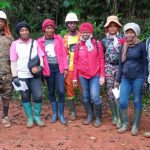Funding source: Rufford Foundation
Project Leader: Jules Christian ZEKENG
Our previous projects showed the potential in terms of ecosystems services and high-priorities species for conservation. However, despite it was under management during the second decade (2009-2018), and that indigenous people are prohibited from accessing in it for agricultural purposes, surprisingly it was found out that annual rates of conversion, degradation, and deforestation from the first decade to the second-decade increases leading to habitat destruction considered as the most important driver of species extinction worldwide, and hence highlight exclusion of the population in management planning as well as their needs in all process for forest management and conservation planning.
This project aim to determine ecology and spatial distribution of high-priority species for conservation as well as their habitat. Contribute to determine the threats and trends of these species and develop a strategy of conservation for threatened species. It want also to convince the local populations to change their behaviour in forest management. Moreover, to convince the managers of the Doumé Communal Forest to involve local populations in the management of the forest as well as to take their needs into account during the management of the resources resulting from the exploitation. By doing so, the pressure on the exploitation and conversion of natural habitats will be reduced, which should benefit biodiversity. This study will raise awareness and educate local populations on measures for the conservation and sustainable management of natural habitats of biodiversity.
Currently household survey and botanical survey stage in the riparian villages of the Doume Communal Forest have been carried.







